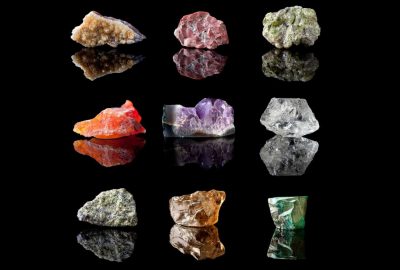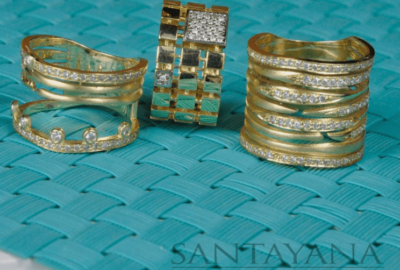Industry News
Channel settings are one of the most common engagement ring designs, but they are also one of the most beautiful. Whether used as an accent to a central stone or to add sparkle to a plain band, these simple settings are a popular feature on many engagement and wedding rings.
Understanding Channel Settings

A channel-set ring arranges diamonds in a line around the band. The jeweler creates a channel in the ring’s band by adding a small metal lip on each edge. Diamonds or other gems nestle into this channel, and the lip keeps the stones securely in place.
Advantages of Channel Settings
 There are several reasons you may want to consider a channel setting for your engagement ring:
There are several reasons you may want to consider a channel setting for your engagement ring:
- This setting allows the gems to take center stage. There are no individual prongs around each stone; instead, the metal lips keep the stones secure without detracting from them with additional metal.
- Because the gems are fully set into the ring, their fragile girdles are protected from chips. This makes the setting generally sturdier than higher, more exposed designs. Furthermore, if there are no elevated stones, the ring is less likely to snag on clothing or projections that could cause damage.
- Because the gems are enclosed in the channel, they have less exposure to light. This allows you to compromise on clarity without sacrificing the beauty of your ring. Many minor imperfections are hidden in this type of setting.
Design Variations for Channel-Set Engagement Rings
There are many different ways to use a channel setting to add beauty to an engagement ring, and it’s important to understand your options before you decide on your design.
Channel Lengths
You can change the look of a ring by changing the length of the channels. The length of a channel depends on the number of stones used. Five to seven stones are popular, though smaller numbers, such as two or three gems, work well as accents.
In-Line Accents
In this type of design, the stones in the channel are along the band in line with the center stone. This creates a continuous a line of gems with the largest, focal gem in the center.
Parallel or Bypass Accents
Another option is to use curved channels along the sides of the central stone, creating a wave illusion. This is a great way to set off the beauty of the focal gem and add sparkle to the overall setting.
Encircling Accents
This design uses two or more channels to completely encircle the central stone, offering a halo effect. Using channel settings in this way allows you to visually enhance the size of the central gem. This is a common style of bridal set.
Embellished Channels
Channels may seem ordinary, but detailed etching or sculpted accents either parallel or perpendicular to the channel can add texture and style to the ring. This offers a lovely way to bring additional personality to your engagement jewelry.
Various Stone Shapes
In addition to basic styles, couples can also choose from different stone shapes in channels. While classic round diamonds are a common option, princess and emerald cuts are also beautiful. Because their square edges guarantee there are no gaps between stones, these shapes give a continuous appearance that can be contemporary and lovely. More elaborate designs may have alternating stone shapes for even more distinction.
Channel Bands
Channel settings are popular styles for wedding and anniversary bands without an elevated center gemstone. Eternity rings are channel-set bands where the stones completely encircle the ring, creating a never-ending loop of diamonds or other gems. You can also use bridal wraps that incorporate channels to bring additional sparkle to a simple engagement band.













































Leave a reply